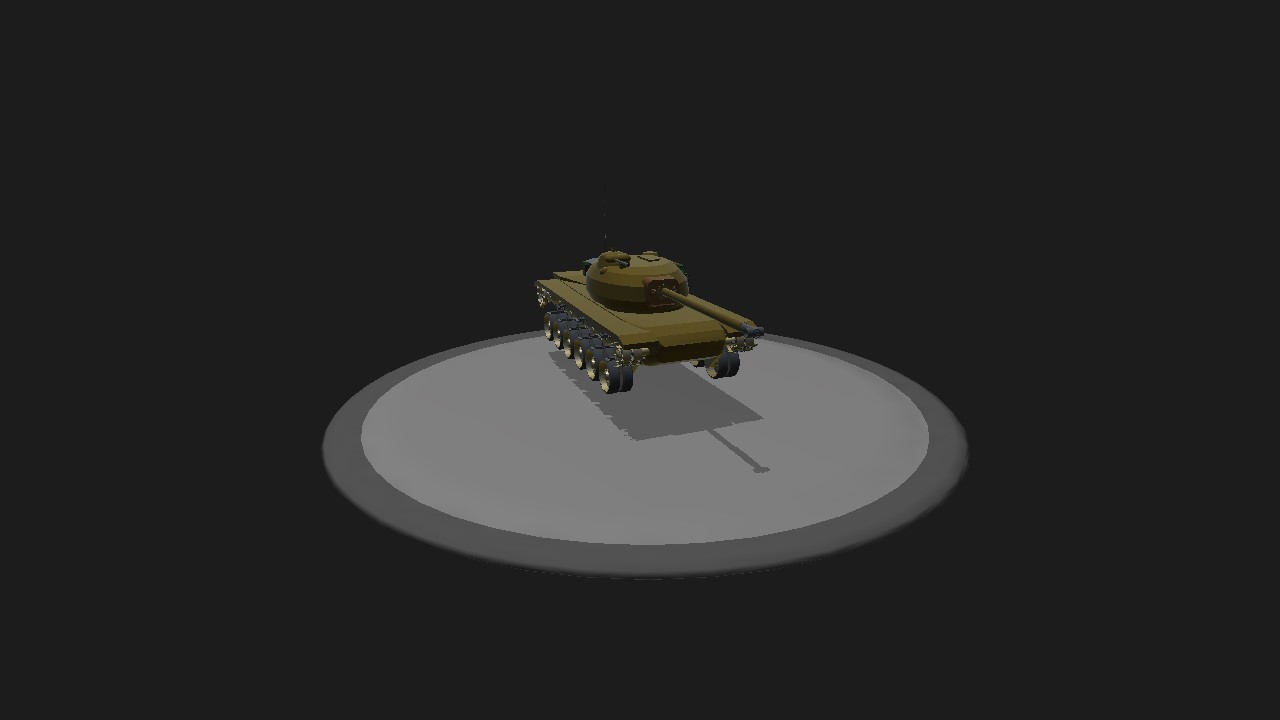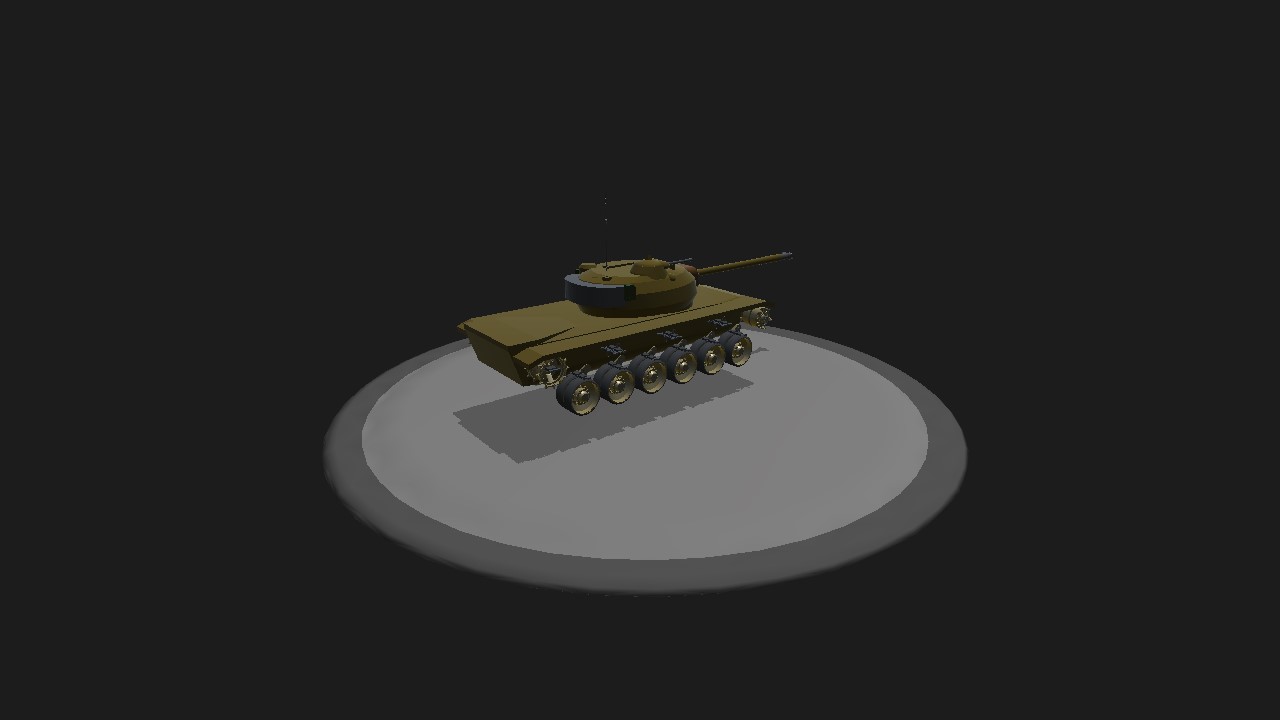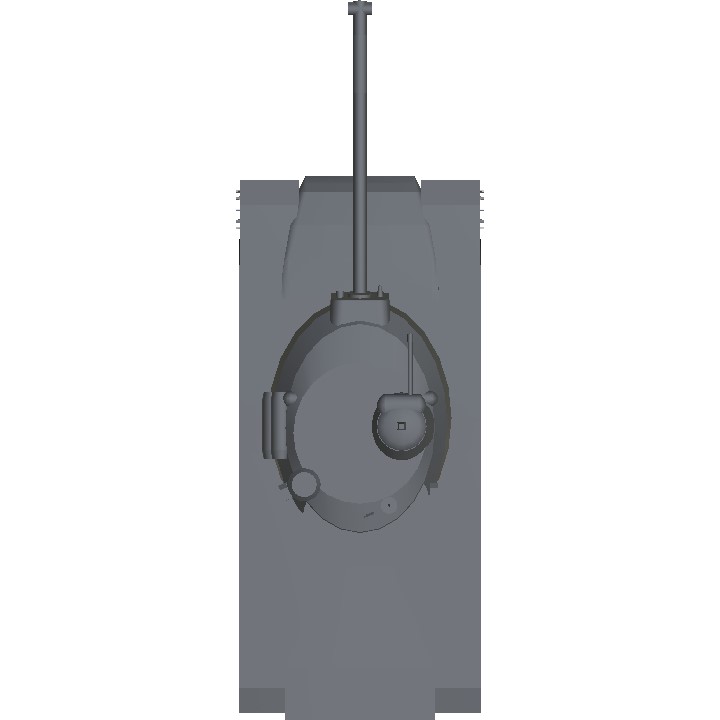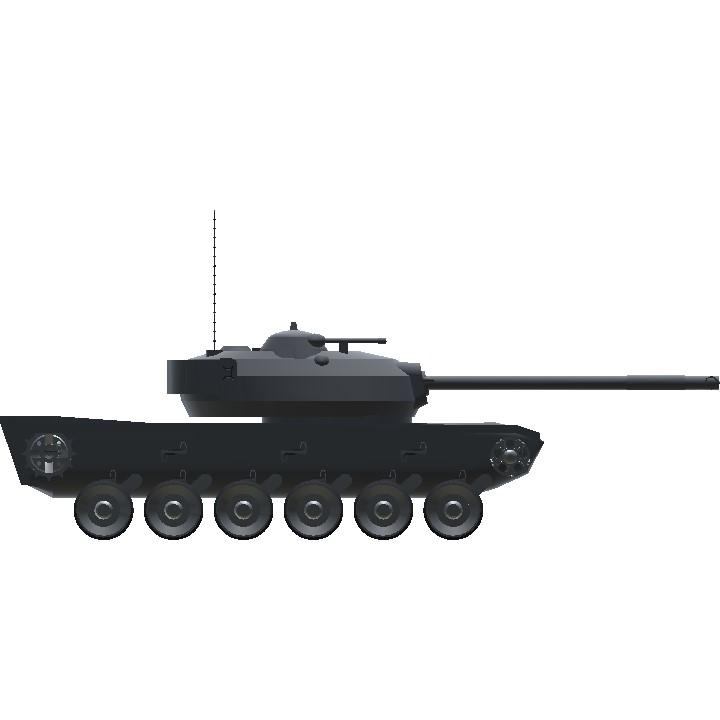In February 1951, the Army initiated the design of the new tank, designated the 90mm Gun Tank T-48 (the prefix letter "T" would be replaced by the prefix "X" beginning with the M60 series tank).[7]
By January 1952 Army officials were considering whether the lighter T42 medium tank was better suited to the doctrine preferred by the Ordnance Department that called for lighter, more agile tanks.[8]
A deeper modernization than the M46 and the M47, the M48 featured a new hemispherical turret, a redesigned hull similar to the T43 heavy tank,[8] and an improved suspension. The hull machine gunner position was removed, reducing the crew to four. In April 1953, the Army standardized the last of the Patton series tanks as the 90mm Gun Tank M48 Patton.[6]
In April 1952 Chrysler Corporation began production of the M48 at its Newark, Delaware, plant. The tank was christened after the late General George S. Patton at its public debut at the Chrysler plant in July.[9] General Motors and Ford Motor Company produced the tank in Michigan. Also in July the Army awarded American Locomotive Company a $200 million contract to produce the tank.[10] In December Chrysler took on orders initially intended for the American Locomotive after the Army ordered production cutbacks to its tank program.[11] Under the "single, efficient producer" model of Defense Secretary Charles Erwin Wilson the Army was directed to reduce the number of contractors producing each model of tank. General Motors underbid Chrysler, and in September 1953 Army Secretary Robert T. Stevens awarded GM's Fisher Body division a $200 million contract to become the sole producer of the M48.[12] The decision raised skepticism in lawmakers. Senator Estes Kefauver noted the move would effectively leave GM as the only producer of light and medium tanks when Chrysler wrapped up M48 production by April 1954. The Defense Department was called to the Senate Armed Services Committee in January 1954 to defend the single-producer decision. During hearings Army Under-Secretary John Slezak said the move reduced costs, and that multiple producers were unnecessary to fulfill the Army's diminishing needs for new tanks.[13]
Months later Chrysler underbid GM in the new round of proposals. In September 1954 the Army awarded Chrysler an exclusive $160.6 million contract to restart production.[14] In November 1955 the Army awarded Alco Products a $73 million contract to begin producing 600 M48A2s the next year.[15] Alco opted to wrap up its tank business when its contract ended in July 1957. In May 1957 the Army awarded Chrysler, the only bidder, a $119 million contract to continue production of the M48A2 in Delaware and Muskegon, Michigan.[16]
In 1960 the Government Accounting Office, investigating performance of Army and Marine tanks, found that the M48 and M48A1 were "seriously defective vehicles."[17] In November a House Armed Services investigation largely corroborated the GAO report, which had been disputed by Army Secretary Wilber M. Brucker.[18]
Nearly 12,000 M48s were built from 1952 to 1959. The early designs, up to the M48A2C, were powered by a gasoline 12-cylinder engine and a 1-cylinder auxiliary generator (called the "Little Joe"). The gasoline engine versions gave the tank a shorter operating range and were more prone to catching fire when hit. Although considered less reliable than diesel-powered versions, numerous examples saw combat use in various Arab–Israeli conflicts. The low flashpoint of hydraulic fluid used in the recoil mechanisms and hydraulic systems for rotating weapons or aiming devices was less than 212 °F (100 °C) and could result in a fireball in the crew compartment when the lines were ruptured.[19] The fluid was not peculiar to the M48 and is no longer used in combat armored vehicles, having been replaced by fire resistant hydraulic fluid. Beginning in 1959, most American M48s were upgraded to the M48A3 model, which featured a more reliable and longer-range diesel power plant. M48s with gasoline engines, however, were still in use in the US Army through 1968, and through 1975 by many West German Army unitsontrols:
Controls:
Pitch and roll for movement
VTOL and trim for turret controls
Extra information:
Main gun does a lot more damage than the average machine gun
On the commanders copula there is a 50. Cal machine gun turret
Modded parts act as armor
Specifications
General Characteristics
- Predecessor M-49 patton
- Successors 4 airplane(s) +14 bonus
- Created On Android
- Wingspan 13.1ft (4.0m)
- Length 35.5ft (10.8m)
- Height 14.8ft (4.5m)
- Empty Weight 72,930lbs (33,080kg)
- Loaded Weight 74,148lbs (33,633kg)
Performance
- Wing Loading 36,739.5lbs/ft2 (179,378.0kg/m2)
- Wing Area 2.0ft2 (0.2m2)
- Drag Points 6691
Parts
- Number of Parts 112
- Control Surfaces 0
- Performance Cost 452
Required Mods
-
Tracks 2
by MOPCKOE_DNISHE
Version 0.8 (7/7/2019 11:58:44 AM)
View Mod Page






Nice desc But look like Many people Just copy this
@JamesBoA thanks